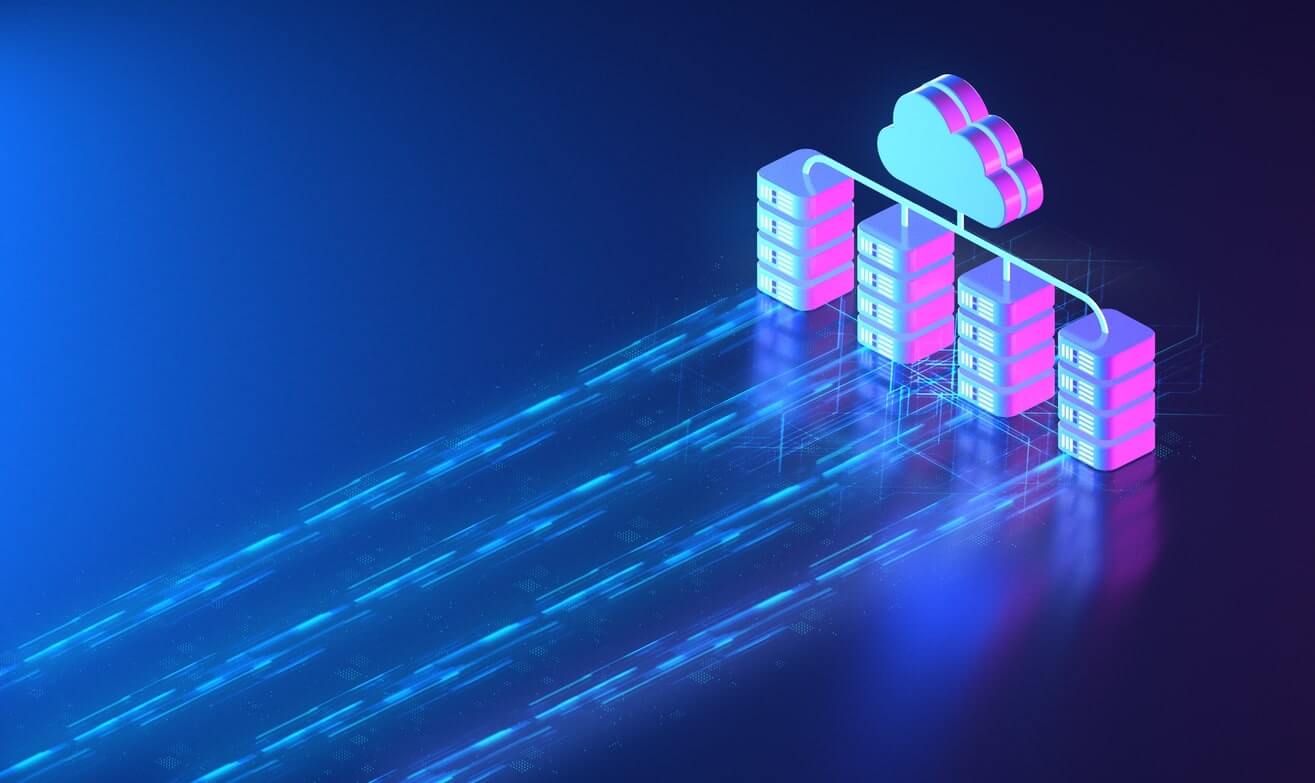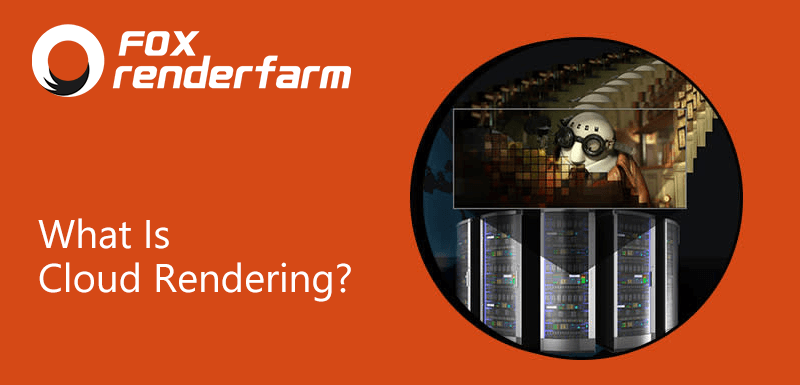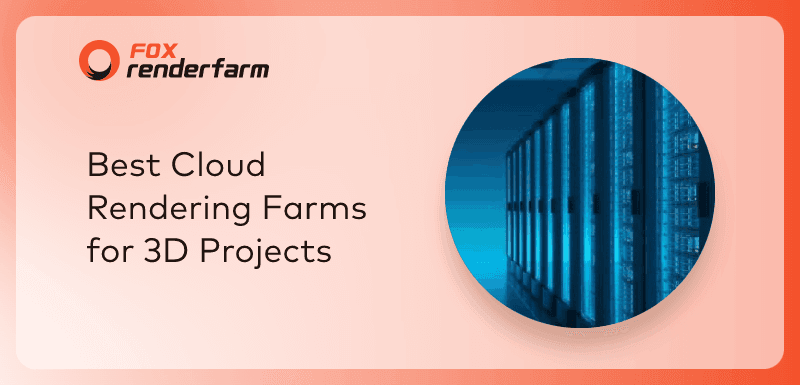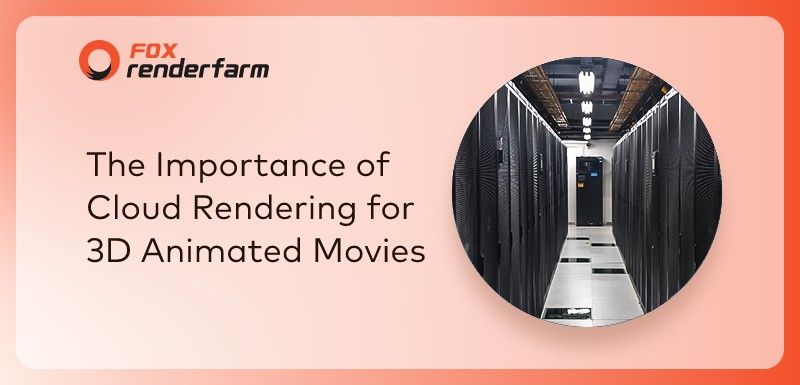SAAS vs IAAS Render Farm
When rendering, the most important thing is the time needed and the hardware available. This rendering process requires a lot of computing power to create images or videos quickly. GPU is the computing power of graphics and is increasingly used to render CAD models. There are special processors in the GPU that can execute commands used to edit and display images and videos quickly. In particular, rendering video requires more power and more time to render as many individual images as possible. These images and videos can be rendered in a matter of minutes, hours or even days, depending on the 3D CAD model. For example, to create a 20 second long animated video at 30 frames per second, a total of 600 individual frames are required. Therefore, if one frame takes 10 minutes to render, the complete rendering process would take 100 hours.

Why Do You Need a Render Farm?
Typically, your workstation consists of a personal or office computer with a CPU and GPU. On this workstation, your 3D CAD raw data is designed and rendered into realistic images or videos. In terms of rendering, powerful hardware is required, including a graphics card. Due to the additional hardware, costs increase significantly, including higher operating and maintenance costs. In addition to the high costs, setting up rugged workstations can be time-consuming when you need to expand or scale your hardware. It's time to consider using a rendering service or outsourcing your work to a render farm.

The evolution of distributed and parallel computing technologies has paved the way for the concept of render farms. An offline render farm typically contains a group of computers that are connected together in a network in order to render in an animated model. Each computer in the cluster is called a render node. An animated scene usually contains a number of individual frames. In a render farm, each frame is simultaneously rendered independently in a different render node, or multiple frames are rendered independently and linearly at the same time in a render node containing multiple GPUs. As a result, this significantly reduces rendering time. In some render farms, in order to automatically assign tasks to each render node, render job management software (provided by the render farm or a third party such as Deadline Monitor)) is used as a queue manager and assigns render tasks to the appropriate render node. Rendering tasks are provided as a service using cloud computing technology, which is referred to as rendering as a service.

Rendering as a Service (RaaS) is based on the principle of cloud-based rendering. The files to be rendered are uploaded and sent to the RaaS service provider and the rendering task is completed using virtual machines in its render farm. Using a RaaS service, rendering deadlines can be determined and the number of virtual machines may be increased to meet the deadlines accordingly. The advantage of RaaS services is that users only pay for the resources used on an hourly basis. As a result, animation studios do not need to invest much money in building their own render farms or ruggedised workstations. However, as RaaS services follow different business models, the potential and target users of RaaS services, that is, animators, 3D studios, freelancers or students, need to spend a lot of time to explore, analyze and identify the right RaaS service provider.
Depending on each render farm, they choose a specific type of RaaS service (including IaaS, PaaS and SaaS) to grow their business. In this article, Fox Renderfarn presents a comparison between IaaS and SaaS and gives a top list of render farms that follow the IaaS or SaaS model. You can use the list to decide which render farm is better for you.

In general, there are three service models for cloud computing, IaaS (Infrastructure-as-a-Service), SaaS (Software-as-a-Service) and PaaS (Platform-as-a-Service). However, cloud rendering farms are usually delivered in the form of SaaS and IaaS models. This article details the differences between SaaS and IaaS and lists the SaaS and IaaS render farms that are right for you.
SAAS Render Farm
SaaS (Software as a Service) is another cloud computing offering that gives users access to a provider's cloud-based software. Users do not need to install 3D software or renderers on their local devices. SaaS provides a complete software solution that you can purchase from a cloud service provider on a pay-as-you-go basis. All underlying infrastructure, middleware, applications and data are located in the service provider's data centre. The service provider manages the hardware and software, you simply upload your work to their system and get the output after waiting for the render farm to render it.

As a workflow, the 3D model is built on your workstation and then uploaded to the SaaS render farm. The render station can be extended by a number of individual render stations, thus creating a render farm. The render farm consists of a number of individual render nodes. These individual computer nodes can be used individually or in combination. This setting allows optimisation and easy scaling of the requirements of the corresponding rendering job. For example, if you have a video, you can order multiple render nodes at the same time, or if you have different images, you can individually select a large number of nodes where each node renders each frame at the same time. Assigning tasks to each render node requires a render manager or an applet belonging to the respective rendering program.
Admittedly, users certainly don't know what the exact machine specs are? Wondering whether they are using a software license or a cracked version? SaaS render farms can run marketing campaigns and indicate that their machine specs are state-of-the-art CPUs and GPUs, or fly the banner of supporting all software or render engines, but who knows what they currently have in the render farm. On the bright side, users are primarily using the number of render nodes to get their work done on SaaS render farms, rather than the power of the computer. The advantage of using a cloud rendering farm service for rendering is that the number of render nodes can be scaled up or down instantly depending on the user's needs. As animators have to pay for the total number of rendering hours using the cloud render farm, they can avoid investing in the huge infrastructure required for rendering.
However, the actual rendering costs are not clearly stated on the render farm's website. Indirect cost variables can be added that significantly increase the actual cost compared to the estimated cost given on the website. Indirect cost variables could be software licensing, data storage, activation time and usage time. Another key factor influencing customer behavior is functionality. Does the render farm guarantee that the upload file and rendering time will be the same as the estimated time or that the rendered file will meet your requirements? For example, they estimate a file upload time of around 15 minutes for 5GB of data, but it actually takes over 2 hours to transfer 5GB of data to the render farm system. Also, due to missing textures or missing files, the render farm may render something completely different to your requirements and output it. What you should do before choosing a SaaS render farm is to consider:
- What software do they support?
- Is the render farm compatible with your own software, renderers and plugins?
- How long does it take to upload files and render them? Or how many nodes can you choose from?
- What is the cost of the render farm?
- Is it difficult to use that render farm? (Some render farms are not user friendly and will take you a lot of time to get used to it.)
If you use CPU-based rendering that requires a large number of computers to complete a project, you should choose a SaaS render farm because you can take advantage of the number of render nodes, where each node renders each frame at the same time. Popular support software such as 3Ds Max Corona, 3Ds Max Vray, RenderMan should be rendered on a SaaS render farm. Outstanding SaaS render farms are Fox Renderfarm and others.
IAAS Render Farm

IaaS (Infrastructure as a Service) is a form of cloud computing that provides basic computing, networking and storage resources to users over the Internet and on a pay-as-you-go basis. IaaS enables end users to scale up and down resources as needed, thereby reducing the need for high upfront capital expenditure or unnecessary owned infrastructure. IaaS consists of a set of physical and virtualized resources that provide consumers with the basic building blocks needed to run 3D programs or plugins and workloads in the cloud.
In the IaaS model, the render farm provider gives you and your studio control of the machine, and your studio will manage the operating system, database, and applications. As a result, you typically have more control and flexibility compared to SaaS. For example, if you use an IaaS render farm, you will need to install your own software, renderers and plug-ins and set up a working environment similar to your computer. However, software licensing issues can be one of the main problems with cloud computing services. In IaaS type services, software license details are often added to the server by the user whereas in SaaS type services, software licensing issues are handled by the render farm provider and the user is charged a fee based on time of use (possibly this fee includes the license fee).

Using this workflow, 3D raw data can first be designed at your workstation and then transferred to a remote server in the render farm. In general, the difference with classic render farms is that render farms are located in a cloud infrastructure. This infrastructure allows the virtualisation of existing hardware so that custom configurations can be made (network configuration of a cluster containing many virtual machines). In an IaaS render farm, the user knows exactly what the server specification contains or the type of CPU and GPU in the server. There is no need to purchase additional hardware, the cloud infrastructure is available to you with just a few clicks. Depending on the volume of heavy tasks or jobs, you can easily scale up or down the infrastructure including the number of VMs, configuration types, number of graphics cards, etc. Once the infrastructure is created, the virtual machines are stored as images in the cloud and are available at any time. Interestingly, the outstanding feature of the cloud infrastructure is that more virtual machines can be created from an original image and then cloned to other images with the same data. By doing this, not only is the time and money spent setting up each image saved, but many rendering nodes can also be processed by a large number of images at the same time.

It is well known that SaaS render farms provide supported software and plug-ins on their systems, users simply upload files and the classic render farm renders the user's work. The SaaS business model seems likely to handle rendering for the user, but there are more IaaS render farms coming to market. The question is why do CAD users still need IaaS render farms?
In fact, 85% of customers need to add their license key to a remote server to use it (some IaaS render farms support specific software licenses), but they continue to choose this type of render farm. The key factor influencing user behavior is the ability to have full control over a powerful server and the flexibility to customize their projects. The IaaS model would be suitable for studios or artists with intricate pipelines and who require a high degree of control from the project owner. In addition to this, if a studio uses multiple software and different renderers and special plug-ins, SaaS render farms can hardly meet the needs of a studio due to the limited types of software supported. It is time to move to an IaaS render farm where the provider offers the highest level of customisation capabilities to its customers. In addition to flexibility, IaaS render farms are highly focused on GPU rendering services.
SaaS render farms utilize the number of render nodes, whereas IaaS render farms utilize the number of GPUs in a single server and the number of servers. Therefore, if you are using software and renderers that utilize GPU rendering, IaaS render farms should be the best option.
Conclusion
In summary, IaaS and SaaS render farms have their advantages and disadvantages. IaaS render farms would be suitable for CPU-based rendering using a large number of render nodes for rendering. classic render farms such as Fox Renderfarm provide rendering for popular software such as 3Ds Max, Maya and Cinema 4D solutions. Users can customize and upload different rendering engines or plugins.
For IaaS render farms, all GPU-based rendering software is optimal on their systems. Full control and high customizability are the decisive advantages that make users choose IaaS render farms. Most importantly, users can leverage the power of multiple graphics cards on a single machine to accelerate their rendering time, which is 50 to 100 times faster than CPU rendering.
New users sign up for Fox Renderfarm can receive a free $25 rendering voucher!
Recommended reading
Top 9 Best And Free Blender Render Farms of 2025
2024-12-30
What is Jibaro? Reveal the Story and Techniques Behind the Production of Jibaro "Love, Death & Robots"
2025-11-03
Top 10 Free And Best Cloud Rendering Services in 2025
2025-03-03
9 Best & Free 3D Rendering Software for Architects & Designers
2025-12-08
Top 8 After Effects Render Farm Recommended of 2025
2025-02-10
Easy Cel Shading Tutorial for Cartoon in Blender Within 2 Minutes
2025-11-26
Shocked! The Secret Behind Using 3D to Make 2D Animation was Revealed!
2025-02-10
How to Render High-quality Images in Blender
2024-12-04
Partners
Previous: Where can I get GPU rendering services?
Next: V-Ray RT for SketchUp Tutorial: Hand-made Model Style Rendering
Interested







